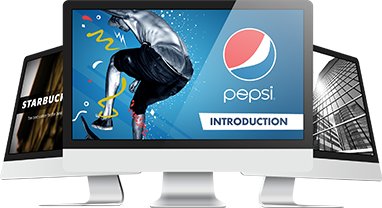Are you conducting a sales pitch any time soon?
Apart from having a custom pitch deck to serve as a visual aid, you need to be in control of the discussion as the speaker/facilitator.

If you’re nervous, that’s okay because experiencing bouts of anxiety is normal when it comes to public speaking.
Everybody’s been through it at least once, but think of it this way: with pitches, you have the opportunity to talk about something relevant.
Introverts vs. Extroverts
People stereotype introverts as those who isolate themselves from crowds, minimizing their contact with other people. While they tend to be preoccupied with their own thoughts and feelings, they make great public speakers.
Introverts have an attention for detail that is very empowering, especially when it comes to preparing pitches.
Extroverts, though they are more comfortable in the presence of others, can be just as nervous as other people before a pitch. They do, however, bring vision, assertiveness, energy, and the network needed to give them direction.


Whether you’re an introvert doubting your abilities in presenting or an extrovert fearing to go overboard, your credibility lies in your authenticity and eagerness to get your message out there.
Wielding the Power of the Presenter
If you want to be an effective speaker, you must fulfill the following:
Don’t rush—begin with an abstract.
Cluttered content will get you nowhere. Remember, a seamless narrative flow is the best thing that a presenter can provide its audience.
So, before you divide your pitch deck into subheadings, focus on the primary theme and come up with an abstract. This will help you stay on topic for the entirety of the discussion.
Internalize before delivering your message.
How you deliver your pitch depends on your mastery of the topic. While a well-made pitch deck can certainly help you stay on track, you still need to know your topic by heart.
The best way to do this is to practice and internalize the flow of your sales pitch. While memorizing may seem like a good idea, internalizing your pitch will allow you to compare and contrast ideas in your own words instead of reading from your slides or notes. This shows your expertise on the topic.
Stick to your outline.
Starting your sales pitch strong will get the ball rolling. If your discussion is following the outline you made, then you can be sure that your conclusion can be easily tied with your starting remark. When you are able to connect your conclusion to your beginning, it shows mastery of the subject. Plus, this is how your audience can gauge your experience as a speaker.
—


Your purpose as a speaker is to inform people. It’s about helping your audience acquire and understand new information that they can apply in their daily lives or may need when making an important decision.
In essence, to hold power as a presenter, you need to have a complete understanding of your topic, commitment to your beliefs, and willingness to take the conversation further. These skills are applicable to all types of speakers, regardless of whether you’re an introvert or extrovert. As long you’re firm and confident, not only will your sales pitch be effective, but you earn more credibility as a speaker.

Download free pitch deck templates now.
Get professionally designed pitch deck slides weekly.
Sign Up NowReferences:
Attilio, Kate. “The Power of a Good Presenter.” Communiqueso. June 13, 2016. communiqueso.com/2016/06/13/the-power-of-a-good-presenter/
Danova, Ilinka. “Extroverts and Introverts in Public Speaking.” LinkedIn. May 13, 2017. www.linkedin.com/pulse/extroverts-introverts-public-speaking-ilinka-danova
Feloni, Richard. “A World Champion Public Speaker Says Introverts Often Make Better Speakers than Extroverts.” Business Insider. May 21, 2016. www.businessinsider.com/champion-public-speaker-says-introverts-can-make-better-speakers-2016-5
Gino, Francesca. “Introverts, Extroverts, and the Complexities of Team Dynamics.” Harvard Business Review. March 16, 2015. hbr.org/2015/03/introverts-extroverts-and-the-complexities-of-team-dynamics

























